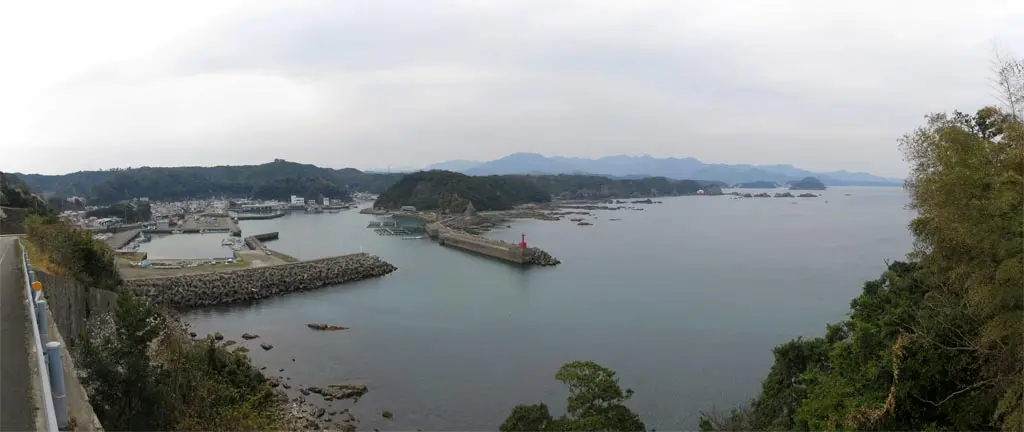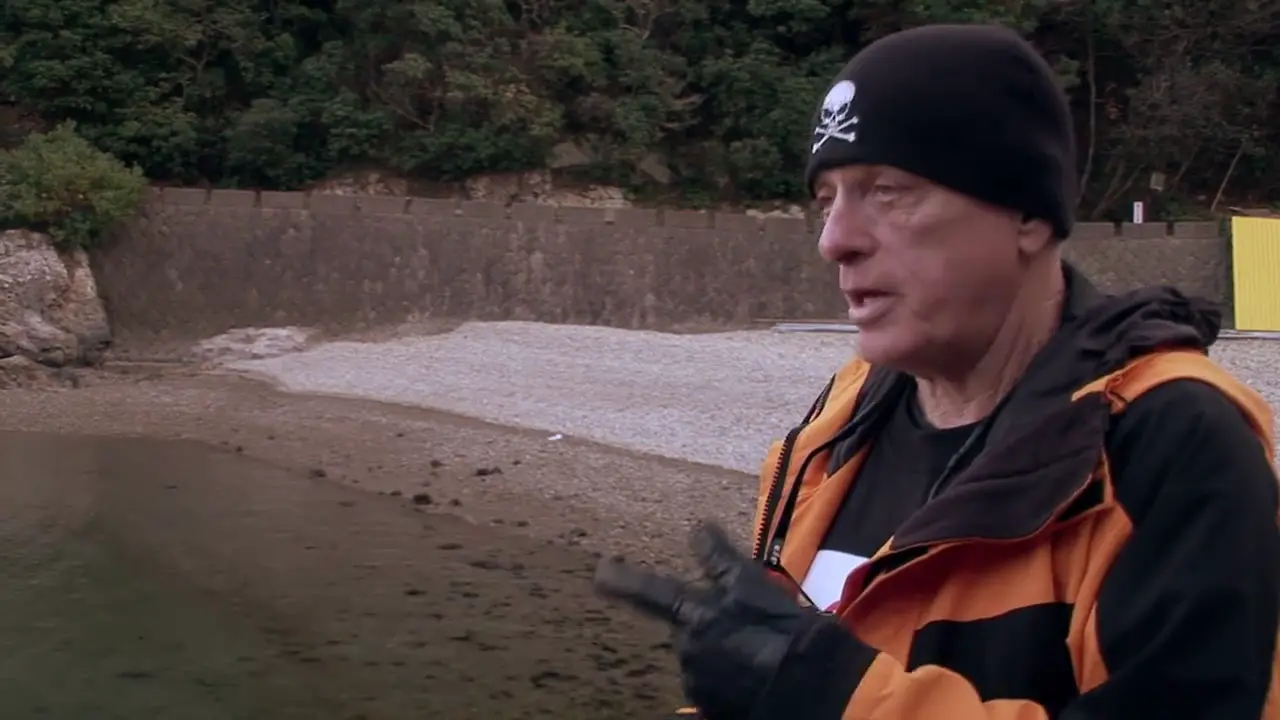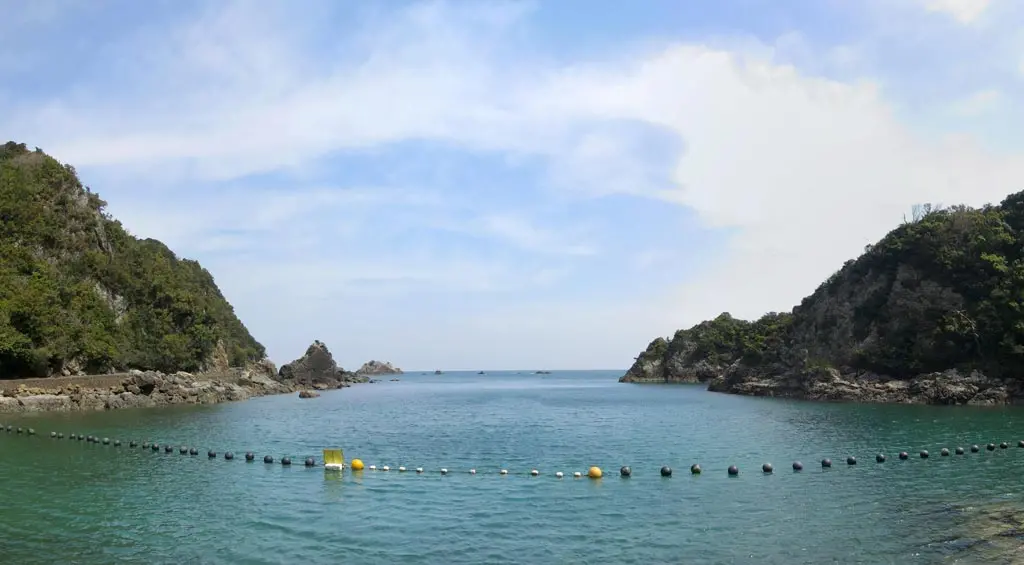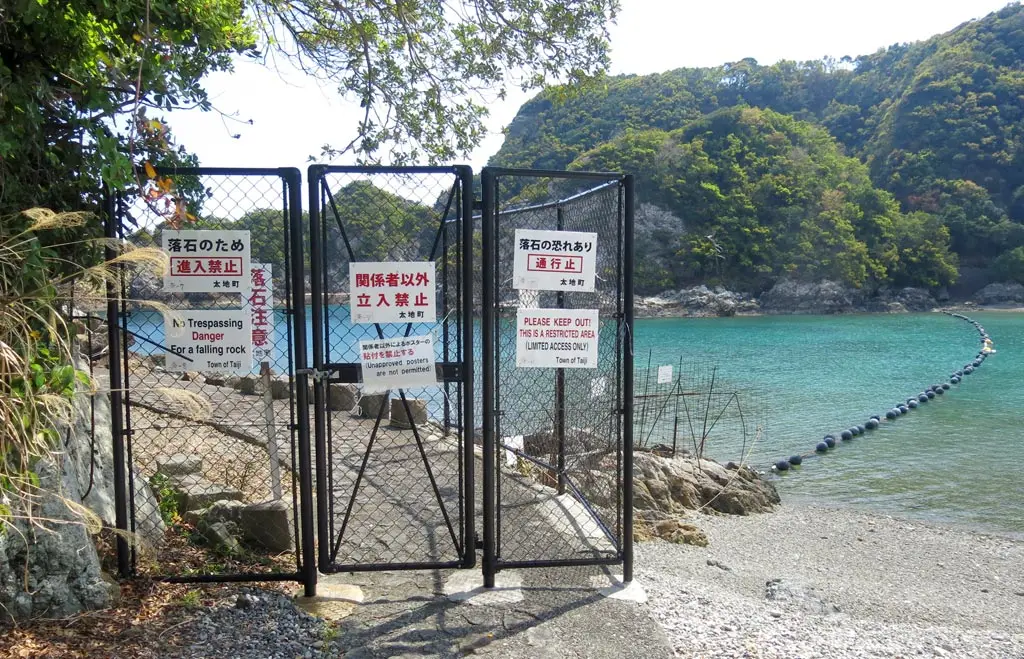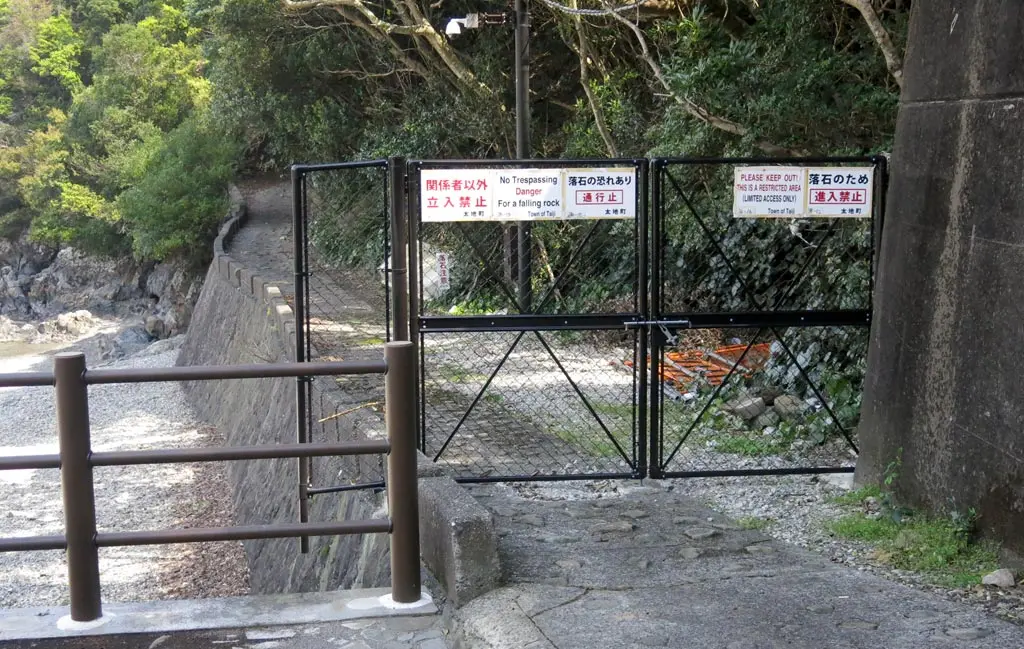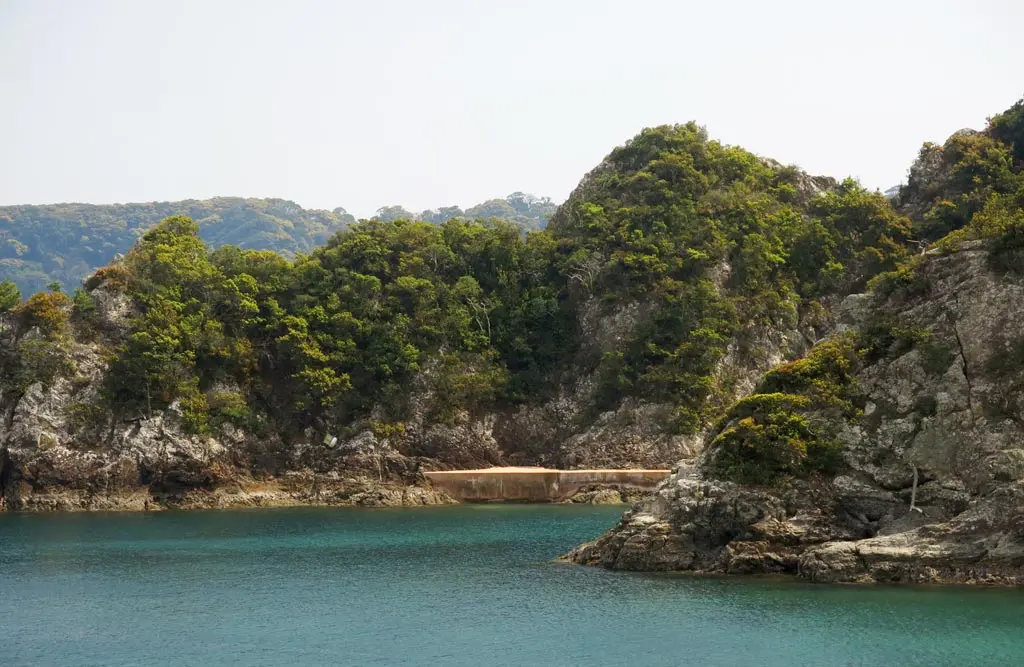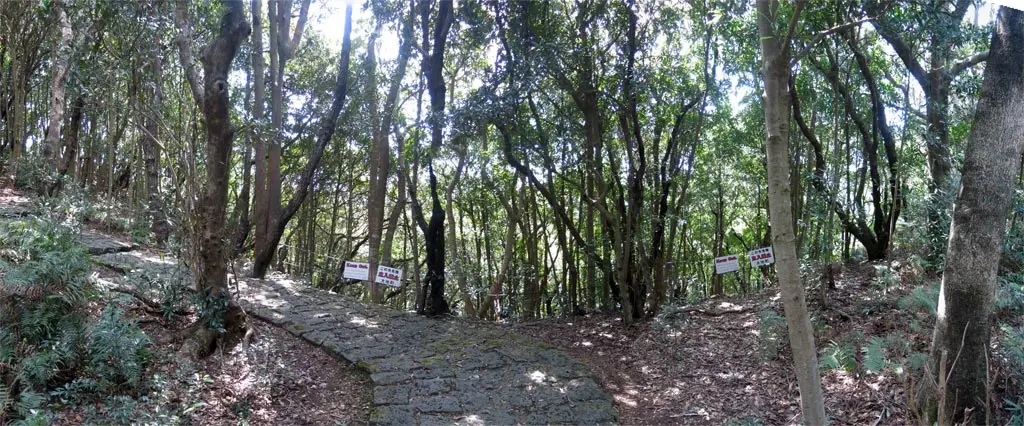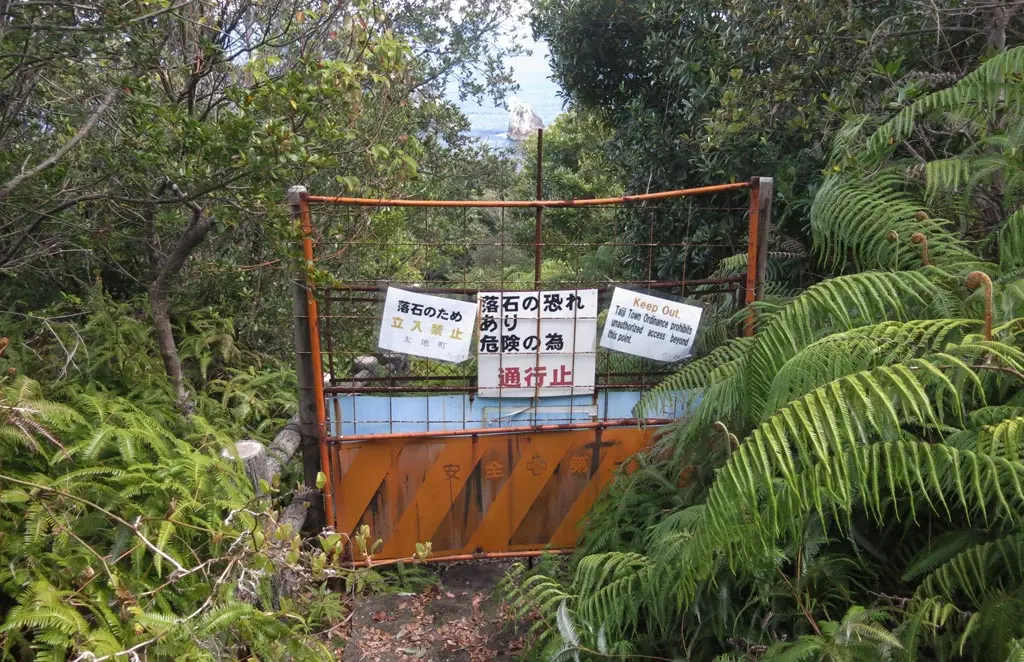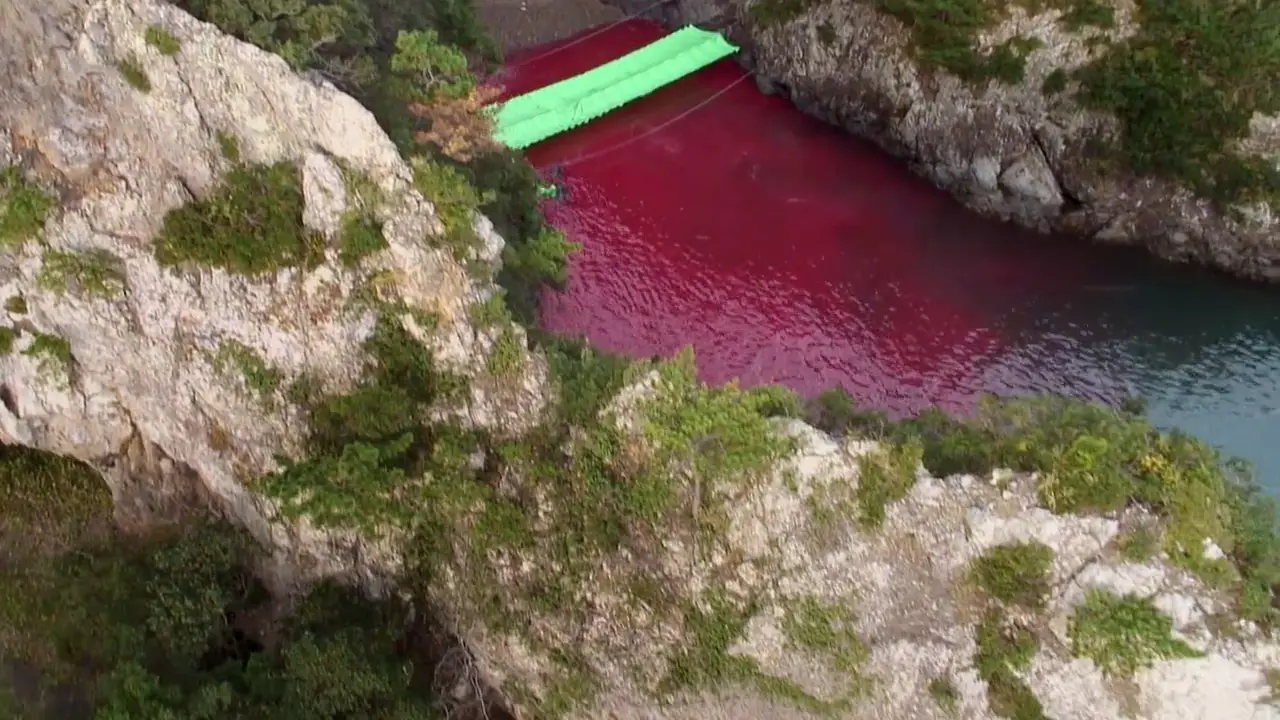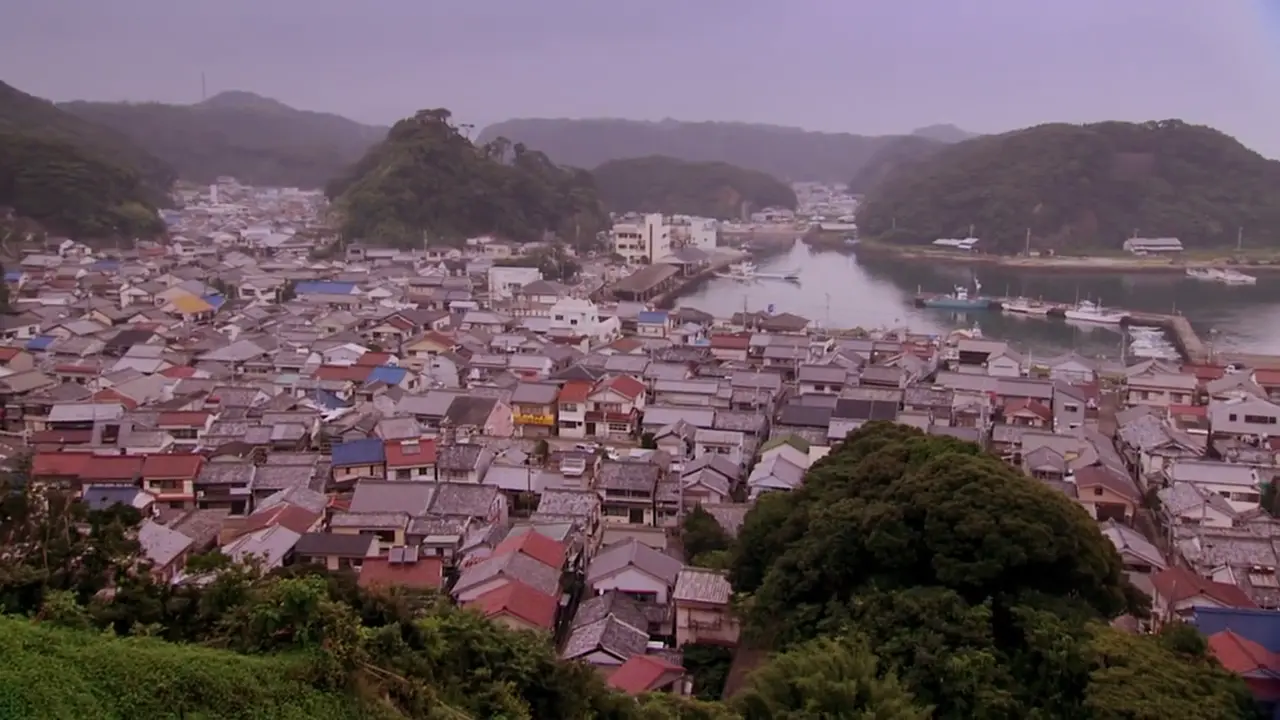Taiji 太地町 is a small whaling town along the eastern coastline of Wakayama prefecture 和歌山県. There's not a whole in this town. They have a whale museum and aquarium, a small art museum, some monuments, and some boat tours of the nearby islands. There's one hotel resort, which seems only to service the aquarium.
All of the real attractions seem to be up north a few miles in Shingu Tower 新宮町. There are plenty of hotels and resorts there. There's a daily fish market that services almost all the restaurants and factories in the region.
Why would anyone actually go to Taiji?
The Cove is a documentary released in 2009 exposing this small town for an annual tradition of rounding up wild dolphins, selling the "good" ones to large aquariums throughout the world, and killing all the rest.
The film follows dolphin rights activist Ric O'Barry and his quest to expose this town.
Ric and the director, Louis Psihoyos, assemble a covert film team that travels to Taiji, and attempt to film the dolphin slaughter that the town has tried to keep quiet. In the documentary, they evade police and security officials to set up several cameras hidden in the woods, underwater, and up on the nearby cliffs. Spoilers! In the end, they are able to capture the footage they want, and use the footage against those denying this thing happens.
I think it's a pretty powerful movie. I've never quite been able to enjoy zoos or aquariums quite in the same way after seeing this movie. It exposes the cruel environments many of the animals are held in, and why it's so damaging to them.
Why is this called The Cove? The dolphin slaughter takes place in a very convenient natural inset away from the beach, and main road of the town. A natural cove.
In the middle of the map is water, and the cove extends off to the right.
On land, it can only be reached by a hiking path that can easily be gated. All other hiking paths that have clear vantage points can be controlled as well. The sea can also be easily controlled as the area is constantly used by fisherman, and the town's establishment. Everyone knows everyone, so if any unidentified boats approach the area, they are easily spotted, and monitored.
Here is the actual place.
The cove is located on the side of road just a few hundreds meters down the road from the whale museum. There's a small police station across from the cove overlooking the area. The beach itself is completely open, and you can walk down to the rocks.
The gathering and killing of dolphins doesn't happen until September, so the area was deserted. There were some cops at the station, but they didn't care or notice me snooping around.
The walking trails on both sides of the cove were locked up pretty tight. The gate on the left-side prevented access to the killing beach. The gate on the right prevented access to a clear vantage point of the beach.
From the gate on the left, I could see a little bit of the hidden cove, but not much. You could see a little more of the same spot from the road, though.
I guess I could have tried to climb around the fences, and tried to get a better look, but the film presented the town as this paranoid, xenophobic mass that did not take kindly to strangers. Oddly enough, that worked against the film's favor in this case.
Surrounding both sides of the cove are forested cliffs with some hiking trails. I went to the north of the cove, and climbed up those trails. These lead behind the whale museum.
As the path reached the cliffs above the cove, the edges were roped off with trespassing signs. "Keep out! Unauthorized access is prohibited!" The ropes and signs lined the entire length of the trail once it got high enough, trying to prevent anyone from getting a good vantage point on the cove beneath.
I continued up the trail, which lead to an open park area. From here, I went through the exit on the other side. This trail went down the cliffs on the ocean side. From there I could travel back along the coast and peer at the cove. But, I was met with another gate.
Still not really feeling ambitious, I turned around. In the park area, there was another trail that led up above the trees. Back in the day, this was probably a location for a lighthouse, or some kind of observation building for the area.
From here, you could see a lot of the beautiful ocean, and the rocky shards piercing its surface and into the sky. Much of Taiji's beaches were filled with these sharp rocks, which can provide some natural shelter and obstacles for fish and other sea creatures against the fishing boats.
Unfortunately, the trees and forests obscured a decent view of the cove.
I descended and returned to the street. But on the way, I decided to hop over the ropes to get my best look at the cove.
I was able to see a little more of the killing beach, but not a clear view of anything important. Just some ropes and tarps.
After that, I basically gave up. I could've went around to the other sides of trails, but I figured I would continue running into more gates, and turn around. Thinking about it now, I probably should've tried coming up from the south and gotten above the cove, or come around the other side. I probably should've tried going over one of these gates to see how far I could get, but I didn't feel like being a foreigner 外人.
In the film, they are able to put their cameras in perfect locations, and film the killing. They get a good overhead shot too from a radio controlled air balloon, which shows the clear outline of the cove and what's inside.
Most of the establishing and B-roll-like shots used in the film were pretty easy to find in the town. One of the first places I went in the town was the find that panning shot overlooking the town. It wasn't too difficult to figure out the location using Google Maps. It's at 33°35'18.1"N 135°56'45.4"E.
I wasn't able to find all the random locations that show up in the film, but the following at the most recognizable that easily stick out for anyone traveling through the town.
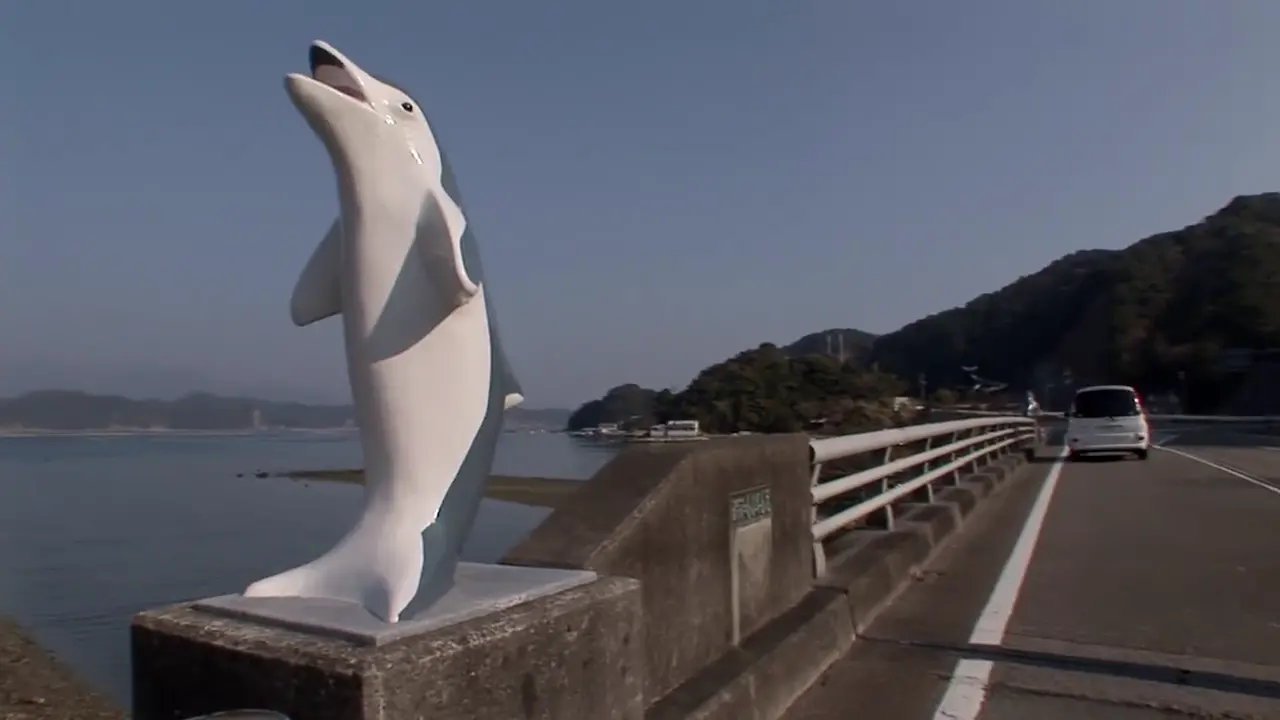
The dolphin at the edge of this bridge is the first thing most people see as they enter town. It's right next to the convenience store on that corner here: 33°35'35.2"N 135°56'03.1"E. Further up the hill is a massive whale statue overlooking this small bay area.
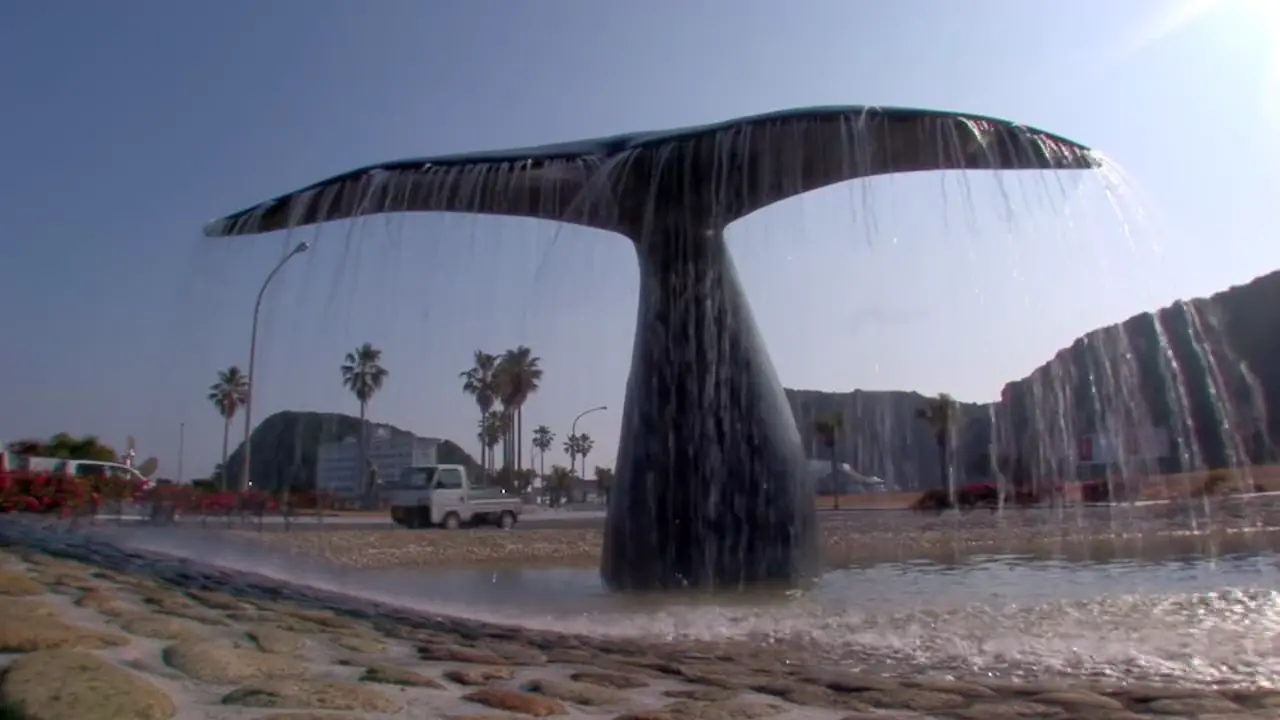
Continuing from the bridge and the whale statue, the road follows along the northern coast line of the city. At the end of that coast line is station for a island tour, and a whaling research vessel parked on the ground. The whale fountain above is in front of these two places, here: 33°36'09.0"N 135°56'33.8"E
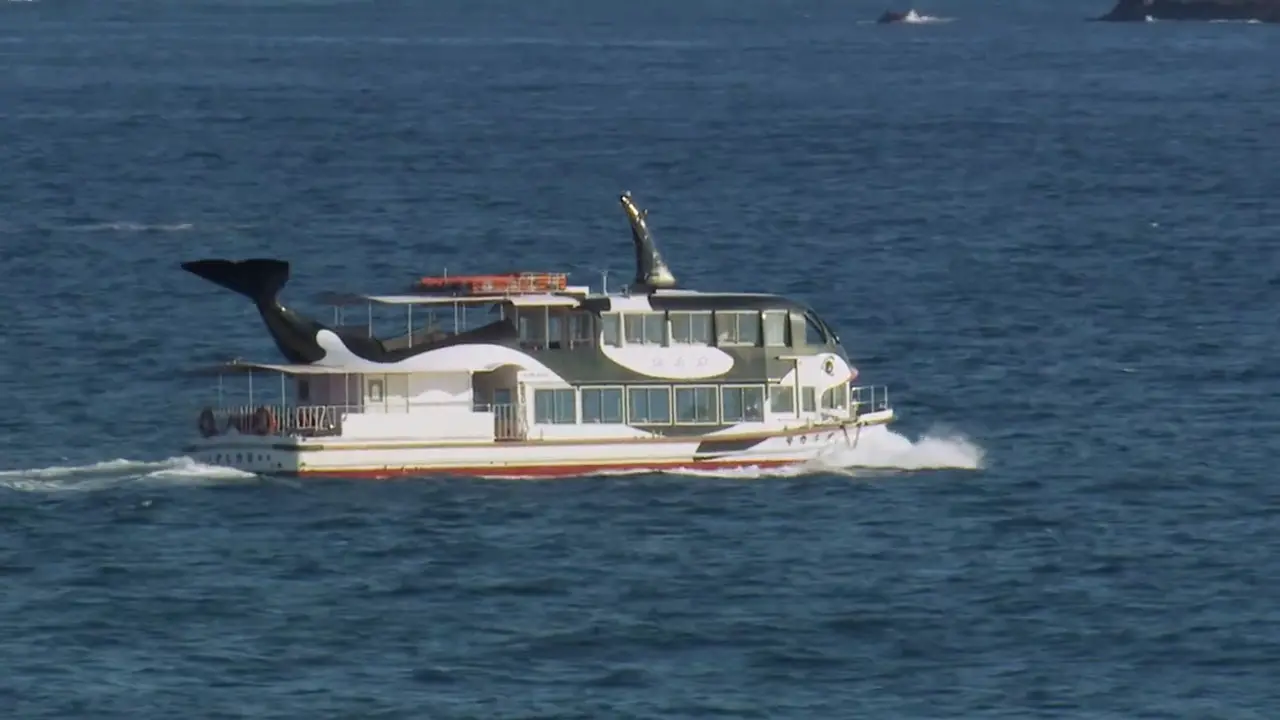
You can buy tickets to travel on this boat and see all the islands in the area. I decided not to do this because it didn't seem like it would result in anything interesting.
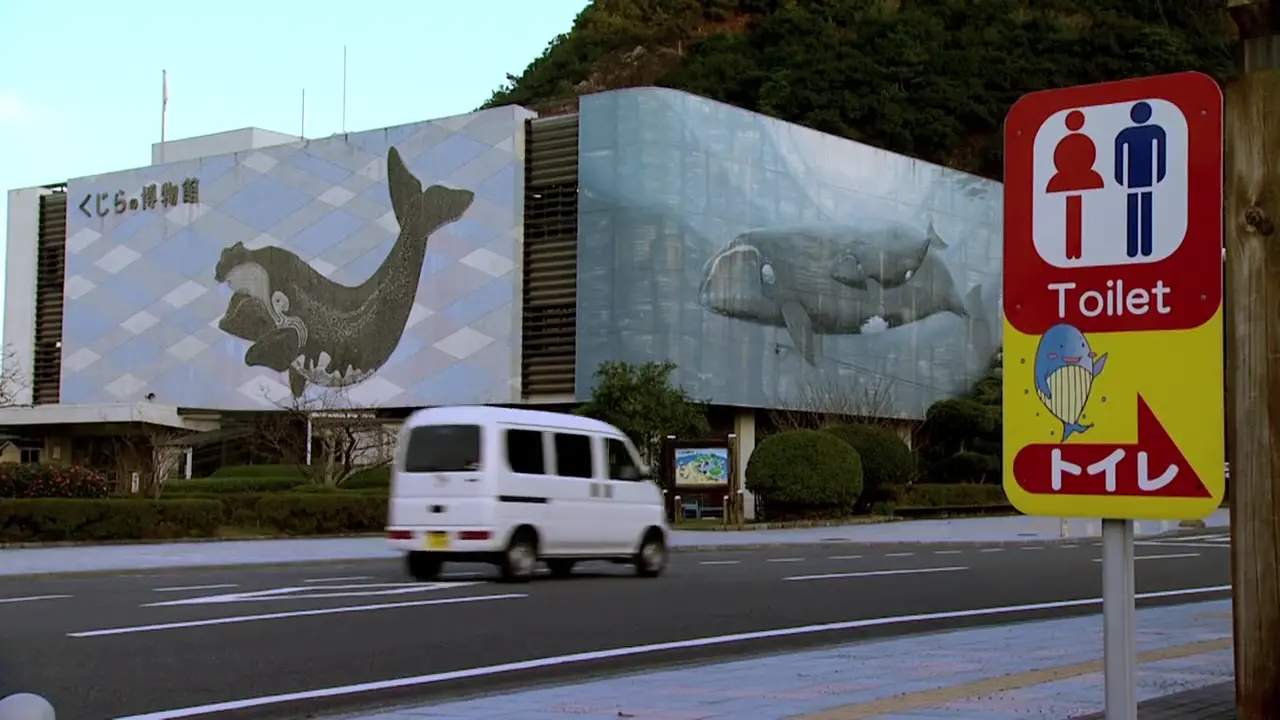
The whale museum is definitely the most interesting thing in the town. I wrote about it here. It's location can be found here: 33°36'06.8"N 135°56'44.8"E. The mural on the side of the museum has now been painted over.
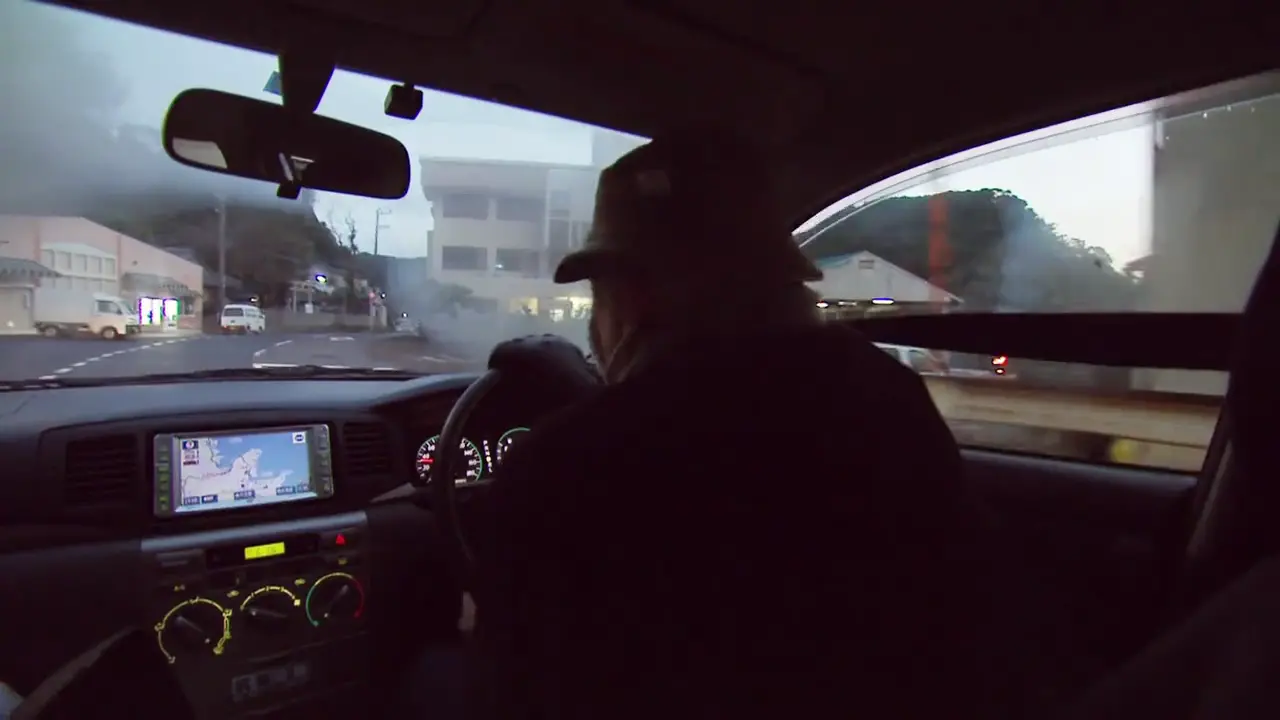
In this shot, Ric is driving through Taiji. The large white building on the right, is that same white building in the establishing shot overlooking the town. This is the Taiji Fisherman's Cooperative. You can find it here: 33°35'29.4"N 135°56'42.4"E
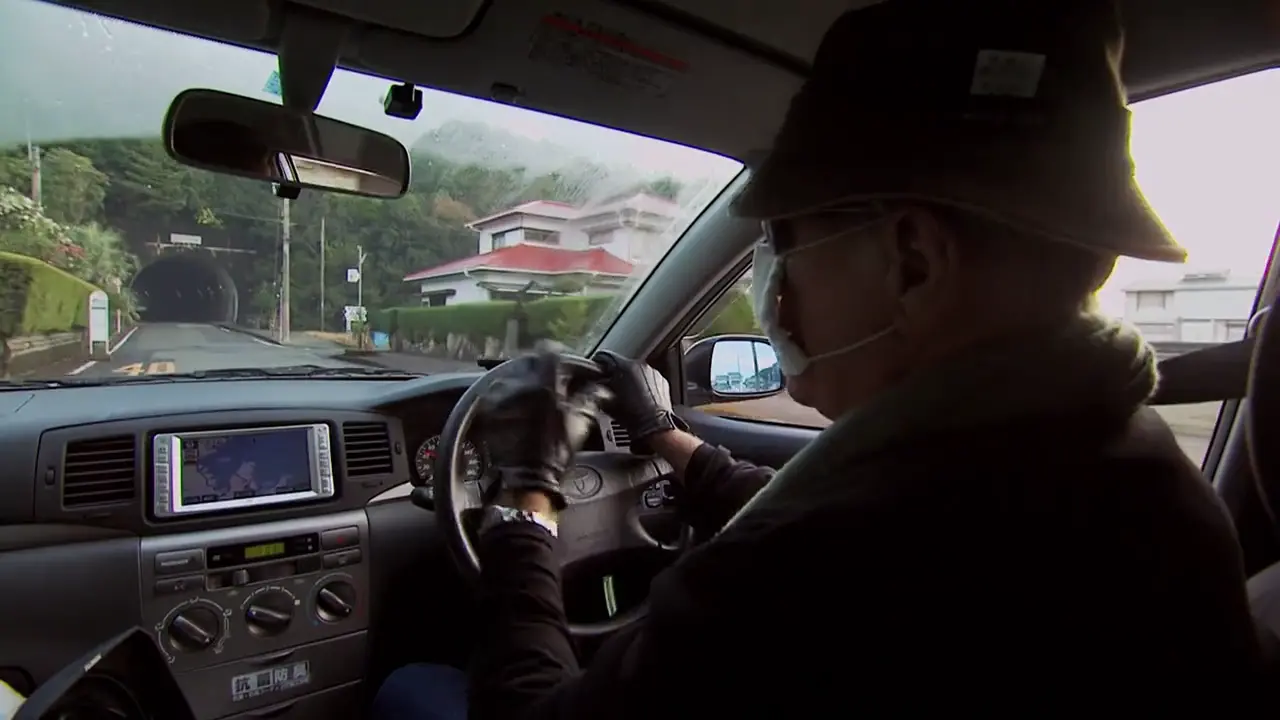
That road snakes around the coast line and eventually connects to the above shot. This is the other side of the tunnel just south of the cove, found here: 33°35'49.5"N 135°56'42.6"E
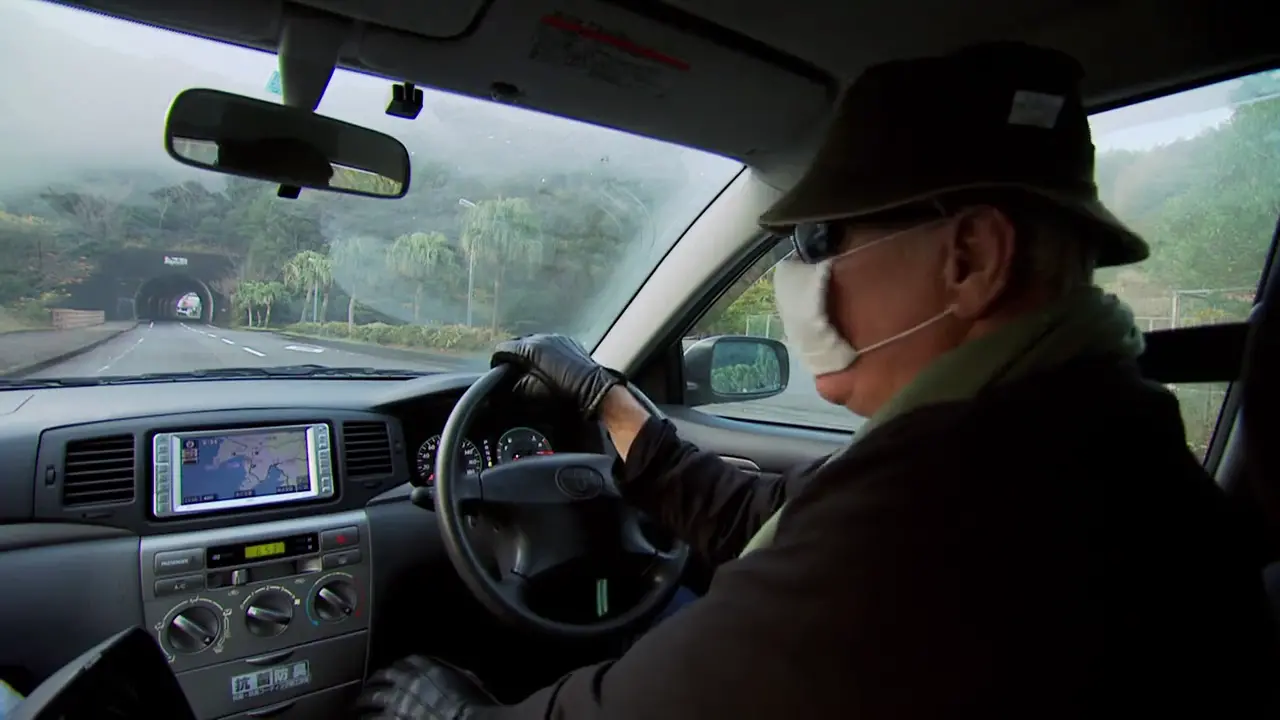
The tunnel seen in the above shot is the other side of the previous location. In this shot, Ric is looking at the cove. The cove is literally on the side of this road, here: 33°35'59.4"N 135°56'42.2"E.

The above location is the Katsuura Fish Market, which is 10 minutes north of Taiji town. I went there the following morning, and the market was completely full of tuna and other massive ocean fish. This is where the whalers of Taiji sell their whale and dolphin meat. It's here: 33°37'34.1"N 135°56'36.6"E.
The trip to Taiji was a somewhat surreal experience.
On one hand, it was fun hunting down locations of the film, and visiting them in person. It was really the first time I had taken a "reality" tour for a film.
Though, the whole trip was shadowed by the overwhelming sense of being watched and unwanted. People just didn't seem friendly at all. I was taking some photos and saw some junior high students walking by. I said, "Hello," and got nothing back. They just looked at me as if I had no business being there. Shopkeepers were very short with their dialog, too.
Perhaps thats because the usual foreigners that visit Taiji knew about the city from the film, so the local people assume they're there to do them harm.
The town just didn't feel right. Or perhaps that overwhelming emotional baggage skewed my view of the place.
